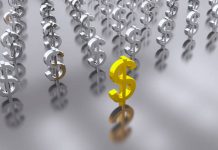The Reserve Bank of Australia meeting minutes reminded us that a Delta outbreak interrupts the recovery, but the economy returns to growth in the year’s final quarter. Having mostly avoided a significant spread of coronavirus in 2020, Australia has seen a surge in cases since July this year. The number of new cases is reaching a plateau, forcing, among other things, authorities to push back plans to normalise monetary policy. At the same time, the number of covid-related deaths in Australia remains relatively low (10-15 per day) compared to Europe and America, allowing one to expect less damage to the economy and a faster recovery.
The currency market is trying to look beyond the immediate events by paying attention to the energy rush. A jump in coal prices and a resumption of Chinese take-up of Australian raw materials are supporting the Aussie. The AUDUSD has been steadily rising since late September, reaching the area of September highs at 0.7460.
A consolidation above the 0.7500 area promises to be a sign of confidence in the outlook for the Australian economy and currency and signals a break in the moderate downtrend since May this year.
Demand for the Australian dollar is also supported by an increased appetite for risk assets, which is accompanied by moderate pressure on the US dollar. A further rally in the markets would open a direct path for the AUDUSD to rise to 0.7700. However, traders and investors should be prepared for energy demand to remain elevated in the coming quarters.
Moreover, the recovery in exports increases the chances that the RBA will very quickly put a rollback in its bond-buying programme and raised interest rates back on the agenda. In this environment, it should not come as a surprise if AUDUSD consolidates above 0.7800 before the end of the year, and next year confidently rewrites cyclical highs above 0.8100, climbing almost as fast as it went down in 2014-2015.













